Stavros Halvatzis's Blog, page 14
August 7, 2021
Layered writing
 Layered writing in Moulin Rouge
Layered writing in Moulin RougeA common weakness amongst student writers is a lack of layered writing. In its place is an indulgence of dialogue and action that plays off on the surface, at the level of plot—with more telling than showing.
Typically, this is external action without the sense of an inner life. To remedy this weakness I advise that writers create internal conflict as something that the reader or audience is made aware of, but not the character(s). Readers will feel compassion, suspense, or fear because they will be privy to something that the character may only become aware of later.
“Layered writing means that a story is driven by the inner life of the characters as much as it is by their external challenges.”My advice to new writers, therefore, is to write scenes where the action is motivated not only by external goals, but by secrets, wounds and suppressed desires, too, though the characters themselves are often unaware of the truth, creating dramatic irony.
In Moulin Rouge, Satine realises that if her lover, Christian, stays with her, he might be murdered by the Duke who wants her for himself. So, to protect him, she lies to him, declaring that she does not love him, but will marry the Duke instead. The audience knows that this lie is a painful but selfless sacrifice. Our heart goes out to her, as well as to Christian, who is devastated by this.
In The Nostalgia of Time Travel, the protagonist, Benjamin Vlahos, an American mathematician, dreams of one day solving an equation that proves that time travel to the past is possible. But as we realise that Benjamin is well past his prime and is unlikely to ever achieve this, our compassion for him grows.
In both examples, it is what lies under the surface that carries most of the emotion and power of the story, not the plot.
Summary
Writing scenes where the external action is supported by the inner life of the characters makes for engaging stories.
Catch my latest video on making your scenes stand out, by clicking on this link!

Tweet
The post Layered writing appeared first on Stavros Halvatzis Ph.D..
July 31, 2021
What Motivates the Protagonist?
 Fear motivates the protagonist, Grace Stewart, to stay locked up in her house for the duration of the story.
Fear motivates the protagonist, Grace Stewart, to stay locked up in her house for the duration of the story.What motivates the protagonist in your story? The very character that ought to be relentlessly driven?
In The Others, Grace Stewart wants to keep her children and herself safe in their large house until her husband returns from the war. She keeps the curtains drawn and the doors locked, never venturing outside. But strange things keep happening. Doors are heard opening and closing. Curtains are being pulled open. Strange voices are heard.
In The Land Below, Paulie is determined to reach the surface in search of freedom. In The Nostalgia of Time Travel, Benjamin is obsessed with solving an intractable mathematical equation. Jack’s desire in Scarab, is to undo Emma’s death. Often, clear and conscious desires are enough to drive the story forward.
But truly good stories do not only pit the protagonist against external obstacles. Good stories pit the external against the internal.
“What motivates the protagonist is the conflict between her want and her need, a conflict she doesn’t acknowledge until the end of the story.”Stories achieve this by hiding a need in the protagonist that is at odds with the want that lies on the conscious level. Think of the protagonist having a conscious desire as his want, and an unconscious requirement for happiness as his need. What drives the drama is the conflict between the two. This conflict is resolved only when the protagonist comes to realise that his need, not his want, is his true goal. Indeed, it is this very recognition that proves that the character has grown and is ready to move on.
In The Others, Grace needs to discover the metaphysical truth about herself and her children. Only then can she identify her true goal.
In The Nostalgia of Time Travel, Benjamin is able to move on from a life of regret and stasis only when he realises that his salvation lies not through mathematical solutions to impossible problems but in forgiving himself. In Scarab, Jack is able to save the woman he loves only through sacrifice – by walking away from the relationship he so desperately desires.
Stories, driven by the tension between what the protagonist wants and what he needs, fascinate, deepening the tale.
Summary
Good stories are driven by the tension between what the protagonist wants and what he needs.
For my latest YouTube video on how to use metaphors in stories click on this link!
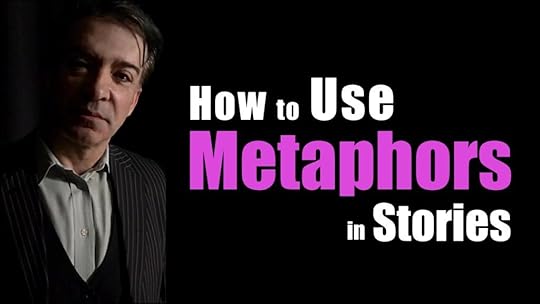 Check it out!
Check it out!Tweet
The post What Motivates the Protagonist? appeared first on Stavros Halvatzis Ph.D..
July 24, 2021
What is your story question?
 The story question – how long can the Abbott family survive?
The story question – how long can the Abbott family survive?The first act of a story performs several tasks, including introducing the story question.
It also introduces readers and audiences to the world of the characters and their role in it. The act contains the inciting incident and the first turning point, and establishes mood and genre.
The central question the story must answer by the end of act three is something that the writer might easily neglect to emphasise in the dash to lay the tracks the story needs to ride on.
In Making a Good Script Great, Linda Seger advises that once the defining question is raised, usually within the first fifteen minutes of a film, and certainly before the first turning point of the story, everything that follows is in response to it.
“The central story question drives the story to its ultimate conclusion.”A Quiet Place revolves around this central question: How long can the Abbott family survive in a post-apocalyptic world inhabited by blind, monstrous aliens with a powerful sense of hearing? In Edge of Tomorrow, the question is: Can William Cage survive as part of the allied force fighting the Mimics? In E.T. it is: Will E.T. find a way to go back home?
In a story with an up ending the answer to the central question is usually, “yes”, and favours the hero.
In a more ambiguous story, however, the answer is not clear-cut. In Donnie Darko, a non-linear film, Donnie is absent from home at the start of the story when a jet engine crashes into his bedroom, so he survives. But the incident is replayed at the end of the tale. This time Donnie stays at home and is killed.
Linking the answer to some deeper revelation that has been previously withheld is a powerful way to bring the outer and inner strands of a story together at the climax. This technique creates an exclamation mark within the final act.
Summary
The first act poses the central story question that is only answered at the climax of the third act.
Watch my new YouTube video on non-linear stories by clicking on this link.

Tweet
The post What is your story question? appeared first on Stavros Halvatzis Ph.D..
July 17, 2021
Good Writing Advice?
 Is Oscar Wild’s advice about writing to be taken a pinch of salt?
Is Oscar Wild’s advice about writing to be taken a pinch of salt?Writing advice is not that hard to find, in fact it’s everywhere. Some of it is very good, some of it not so much. The challenge is to sift through it until you separate the chaff from the wheat.
Princeton University’s Joyce Carol Oates, who teaches Creative Writing and is a multi-award winning novelist, does offer us some good general advice:
1. Write your heart out.
2. The first sentence can be written only after the last sentence has been written. FIRST DRAFTS ARE HELL. FINAL DRAFTS, PARADISE.
3. You are writing for your contemporaries – not for posterity. If you are lucky, your contemporaries will become posterity.
4. Keep in mind Oscar Wild: “A little sincerity is a dangerous thing, and a great deal of it is absolutely fatal.”
5. When in doubt how to end a chapter, bring in a man with a gun. (This is Raymond Chandler’s advice.)
6. Unless you are experimenting with form – gnarled, snarled & obscure – stick to the accepted format.
7. Be your own editor/critic. Sympathetic but merciless.
8. Don’t try to anticipate an ideal reader – or any reader. He/she might exist – but is reading someone else.
9. Read, observe, listen intently! – as if your life depended upon it.
10. Write your heart out. (Again).
There you have it. Good advice to guide your writing. Take the time to ponder upon it.
Summry
Study the suggestions of accomplished writers to glean good writing advice from their thoughts, statements and works.
To catch my latest YouTube video click here.

Tweet
The post Good Writing Advice? appeared first on Stavros Halvatzis Ph.D..
July 10, 2021
The Power of the Secret
 The power of the secret in Primal Fear
The power of the secret in Primal FearOne way to get to know your characters is to have them reveal their secrets to you. Place yourself in each character’s shoes and try to have them talk through you—as if you were talking to a psychologist or a priest in a confessional.
In the chapter on The Secret Lives of Characters (The Dramatic Writer’s Companion, Will Dunne) we are told that, “Characters with secrets have an objective (to conceal), a problem (the risk of exposure), and a motivation (enough at stake to require privacy).” That’s quite a truckload of treasure to help us enrich our stories.
Delve into your character and plot by having the character confess his or her secret, using the format offered below. What does the secret suggest about the character’s values? His or her psychological, sociological and physiological status? Next, write down ten actions the character might undertake to keep this secret hidden from the world.
Example: “I’ve got a secret about something I did in the past. I am Claudius in Hamlet. I killed Hamlet’s father, the king, so I could marry his wife and assume the throne of Denmark.”
This admission cuts to the heart of the character. It is easy to imagine why Claudius would behave in this way, given the gravity of his secret. His secret not only reveals his lack of values — his desire for power that has made him a murderer — it also explains his present and future actions: He fears disgrace and retribution if he’s found out. Knowing that Hamlet suspects him of the murder of his father, he tries to exile him and plots his death. This is how secrets turn actions into plot.
“Secrets are prodigious story generators.”Example: In Primal Fear, defense attorney Martin Vail (Richard Gere) is representing altar boy Aaron Stamper (Edward Norton) who is charged with murder. Aaron, who purportedly suffers from dissociative identity disorder (DID), claims his alter-ego “Roy” is responsible.
Aaron’s secret? “My name is Aaron Stamper and I don’t have DID! I am a sociopath and an exceptionally good actor.”
This secret is so central to the story that keeping it hidden drives the entire tale. The challenge is to keep the audience guessing.
Secrets, then, drive stories – use them to shape character and generate plot.
Summary
What is your character’s secret? Write down ten actions and their consequences that flow from it.
To catch my latest YouTube video click in this link!

Tweet
The post The Power of the Secret appeared first on Stavros Halvatzis Ph.D..
July 3, 2021
Who is the pivotal character in your story?
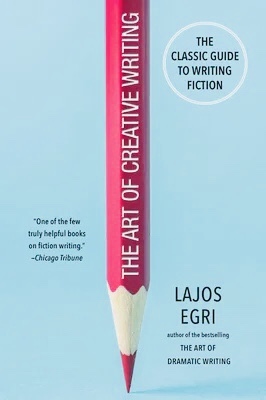 The pivotal character via Lajos Egri
The pivotal character via Lajos EgriWho is the pivotal character in your story? Lajos Egri defines this character as the one who forces the action.
The pivotal character may take the form of the antagonist, protagonist, love interest, sidekick, mentor, and so on.
This character generates energy from the get-go. He or she is the motivating force, the engine of conflict in a story, confident about the course of action to be undertaken. Othello’s Iago is such a character. His function is to drive the story to it’s ultimate conclusion.
Sometimes the character is relentless because circumstances have placed him in this position. An honest man who steals, for example, does so not for excitement or gain, but because his family might be starving, or he might need money for an operation for his child. But because he is an obsessively driven individual who focuses on his own goal, he can be reactionary and militant.
“The pivotal character forces the action, causing other characters to act.”Pivotal characters are fixated on their goals and will drag others along with them.
Here are some characteristics and circumstances that make for effective pivotal characters:
Someone who wants to take revenge on the man who ran away with his wife.Someone willing to give his life for his country.Someone who loves a woman but must make money first to marry her.Someone greedy. His greed springs from poverty. He exploits others because of it.Someone who obsessively wants to achieve success in a specific job or profession and will stop at nothing to achieve it.A pivotal character is useful because he grants the writer flexibility—pivotal characters are usually protagonists or antagonists, but not necessarily so. This means the writer can utilise other characters to enrich the story without having to do it through traditional roles.
Summary
The pivotal character can be the protagonist or antagonist, or she can be the love interest, ally or mentor, providing she forces others into action throughout the story.
Catch my latest YouTube video by clicking on this link!

Tweet
The post Who is the pivotal character in your story? appeared first on Stavros Halvatzis Ph.D..
June 26, 2021
Audience participation – how to get it
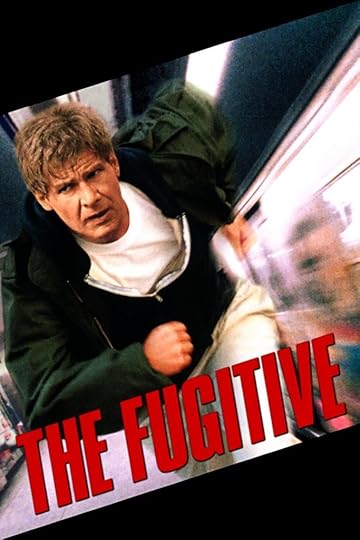 Audience participation in The Fugitive
Audience participation in The FugitiveSometimes writers try to solicit audience participation by injecting more action into their stories. They erroneously add a fight scene here or a chase scene there in the belief that it will capture the audience through sheer pace alone. They fail to realise that action works best only if it is built upon the foundation of rising stakes, anticipation, suspense.
Firstly, the audience has to care about the character whose life is placed in peril. This means the character has to be finely crafted to evoke sympathy. Crafting sympathetic characters in a feature film or novel is crucial if we are to care about the story at all. I have written about this topic extensively on this site.
At the level of plot, the story benefits through setbacks that delay the hero’s achieving the story goal. Like the drawing back of an arrow, a setback allows the shaft to travel all the faster when released. The setbacks take several forms – barriers and reversals being the most common.
Think about the number of barriers that Sam Gerard encounters in trying to find Richard Kimble in The Fugitive. Each ramps up the tension by allowing Kimble to stay one step ahead and increases our involvement in the story.
“Audience participation is essential if your story is to succeed. Work at learning the craft until it is mastered.”How about the reversal in Edge of Tomorrow when Major William Cage meets with General Brigham who is in charge of operations?
The General wants Cage to film the Allied assault against the enemy for purposes of morale. Cage wants no part of it. When Cage tries to blackmail Brigham to force him to reconsider his decision, he ends up being stripped of his rank and sent to the front as a lowly private instead. It is a reversal that sets up the entire story.
In my science fiction novel, Scarab, the protagonist, Jack Wheeler, is confronted with a devastating choice in trying to rescue the woman he loves. He can save her from certain death, but only if he stays away from her forever. It is a reversal in expectation that increases our involvement in the story.
Placing your hero in a situation of undeserved misfortune, then tightening the screws, is one technique that is bound to help increase audience participation in your stories
Summary
A sympathetic hero, in a feature film or novel, who encounters obstacles and reversals in trying to achieve his goal, increases audience participation in the story.
Catch my latest YouTube video on how to write story hooks by clicking on this link.
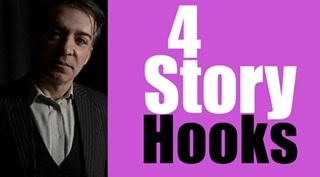
Tweet
The post Audience participation – how to get it appeared first on Stavros Halvatzis Ph.D..
June 19, 2021
How to start a story – questions and answers
 Useful tips on how to start a story.
Useful tips on how to start a story.One way to start a story quickly is to know your characters.
In his chapter titled, Developing your Character – Defining Trait, in The Dramatic Writer’s Companion, Will Dunne explains that one way to do this is to interrogate your characters off the bat. Sit your characters down in your mind’s eye and ask them a series of telling questions.
Ask the character: What makes you truly angry? Then follow it up with: Can you trace this anger to a past incident, perhaps in your childhood?
Continue with: What do you fear the most? Can you think of when you first felt it?
Balance it with a more positive emotion: Who/what do you love deeply and irresistibly? What would you do to have that love returned, or, if an object, acquired?
“Start a story by interrogating your characters as a first step. Ask the character(s) questions related to strong emotions. Use the answers you receive to fashion characters and story beats.”Having gotten answers to these questions ask yourself: How do these emotions manifest in a dominant trait in the character? Does the trait originate from a physical ‘wound’—such as a limp or a speech defect? A sociological wound arising from a character having being demeaned or ridiculed because of her poverty or social standing? A psychological wound stemming from child-abuse or the like?
Lastly, try to project the dominant trait onto the story’s outer journey—the plot. Is the persuit of the goal the character’s attempt to heal the wound?
This process might not seem like much, but in truth, it forms the basis of good story preparation. Give it a try.
Summary
A quick way to start a story is to interrogate your characters in a way that reveals three key emotions—anger, fear, and love.
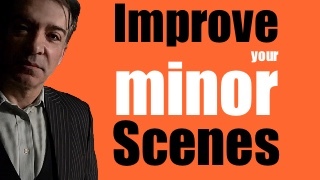
Follow this link to my YouTube video on improving your minor scenes!
Tweet
The post How to start a story – questions and answers appeared first on Stavros Halvatzis Ph.D..
June 12, 2021
The Moral Premise – how to harness it.
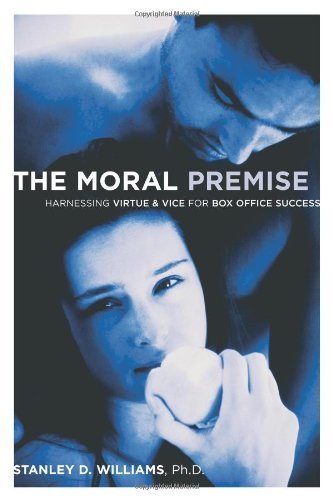 The power of the moral premise.
The power of the moral premise.What is the moral premise? How does it differ from a dramatic premise? And why do you need it anyway?
In his book, The Moral Premise, Stanley D. Williams points out that most commercially successful stories are forged upon the anvil of a moral premise—a clear message to audiences and readers about the reward or punishment associated with embarking on a path of virtue as opposed to a path of vice.
Stories that embody a universal truth about the human condition ring true, and, providing that other components are present—good characterisation, dialogue, as well as an intriguing plot—people are likely to reward such stories with good book or ticket sales.
The moral premise is a sentence that captures the meta-story of the tale—what the story is really about on the inside, whereas the dramatic premise captures what it is about on the outside.
Macbeth is an ambitious Thane who is triggered by a prediction that he will become king. Encouraged by his wife, he murders the rightful king and usurps his throne. This is the dramatic premise of the story.
But what the story is really about is its value-defining premise—how unchecked ambition leads to the murder of a king, and what consequences flow from such an act.
“The moral premise is the true pilot of the story, guiding all actions and events that comprise the tale.”The moral premise has two parts. Together they encapsulate the totality of the moral landscape with virtue and vice on opposite poles. Simply stated: Virtue leads to a good outcome, but vice leads to a bad outcome. Macbeth is the much loved Thane of Glamis, respected by the king, and the wider community of friends and kingsmen. His initial state of virtue leads to love and praise within his rightful social place.
But his murder of the king activates the second part of the moral premise, his hidden vice—unchecked ambition leads to murder and mayhem.
Defining the premise in this way allows you to construct a tale in which the protagonist’s inner Journey from virtue to vice or from vice to virtue plays out as an outer journey for all to see.
Summary
The moral premise describes the protagonist’s movement from vice to virtue or virtue to vice, while the dramatic premise describes its physical enactment.
Click on the link to watch my latest YouTube video on how to Use Dramatic Irony in Stories
Tweet
The post The Moral Premise – how to harness it. appeared first on Stavros Halvatzis Ph.D..
June 5, 2021
Constructing characters – who, what, how, and why?
 The Spire, a masterful study in constructing characters.
The Spire, a masterful study in constructing characters.As writers we are constantly engaged in constructing characters who hurt, desire and dream. We try to imbue them with deep passions and a need to achieve their goals at any cost. We try to write characters who are complex, multi-layered.
But how do we achieve this, practically? In her book, Advanced Screenwriting, Dr. Linda Seger suggests that we start by asking the following questions: Who is the character? What does the character want? Why does the character want it? How does the character get it?
One way to discover a character’s personality is to interrogate her.
Who is the the character? Is she shy, reclusive? Happy-go-lucky or introverted? Reliable and honest?
What does she want and how far will she go to get it? This is the external aspect of character – one tied to the external goal.
Why is the character driven? What is the psychology behind the need?
How does she get what she want? Is she a ruthless go-getter who stops at nothing – persuading, threatening, manipulating, or does she achieve her goals through kindness, by example, through wisdom and intelligence?
“A key to constructing characters is to ask questions that drill down to the defining aspects of identity and personality.”In The Spire, (who) Jocelin, Dean of the Cathedral, (what) is obsessed with erecting a 404 foot tall spire (why) because he believes he has been chosen for this task to bring the people of the town closer to God. The project (how) is funded by his aunt, Lady Alison, a mistress of the former King. But Jocelin’s plans fly against the advice of many, especially the master builder, Roger Mason, who believes the cathedral’s foundation cannot take the added weight. As the novel unfolds we learn that the project has more to do with Jocelin’s unyielding will than his desire to exalt his people by glorifying God through the building of the spire.
Characters are also aided or impeded by their values – their sense of justice, love, compassion, the belief that reconciliation is the only way to meet death without regret. A sympathetic character’s values will always be positive.
But antagonists too believe they have values. The difference is that their view is subjective. A typical protagonist, by contrast, displays a more objective value system shared by the reader or audience. Interestingly, we get the most out of our characters by creating tension between their obsession and their value system. This is because inner conflict makes for absorbing stories.
Summary
Ask the who, what, how, and why questions before embarking on constructing characters. The answers will help you write a more convincing story.
Click on this LINK to view my new YouTube video on how to create emotion in writing!
Tweet
The post Constructing characters – who, what, how, and why? appeared first on Stavros Halvatzis Ph.D..



